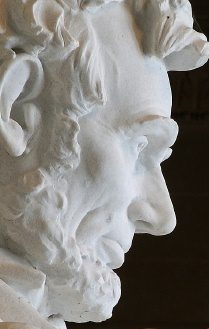A few weeks ago an old acquaintance from Mankato, where I graduated from high school in 1969, asked me to write up a post on a popular boutique shop that my Mother set up with a collection of “faculty wives” who called themselves the “Harpies” and who’s store they named “Harpies Bazaar.” Unfortunately, he asked me to post it on Facebook, a notoriously upbeat online space where people get depressed because everyone else’s lives are made to look so good. I linked to a blog post about my Mother’s Alzheimers. Downer.
But then Brad asked me to tell a bit about my foreign exchange student, Bedru Beshir, from Ethiopia. Brad was a class ahead of me and within a year of his 50th year anniversary of his graduation. There had been some curiosity after all these years about what had become of “Beds.” Brad and others from Bedru’s class had located Facebook pages of various Bedru’s currently living in Ethiopia. I had to tell him they were not our Bedru. Other graduates of the class of 68 had already discovered my old Reader Column spelling out Bedru’s likely fate. It was not a happy one for the first black student in memory to have attended Mankato High School. Double Downer.
What caught Brad’s attention to me was a response I had left to a series of Mankato History Facebook posts that had been prompted by the news that the Minneapolis Sculpture Garden. The garden was in the news for a controversial piece of art depicting the massive scaffold built in Mankato in 1863 to hang 38 Sioux Indians. Downer number three. I wrote about that in the Reader as well.
There were some furious arguments going on in Mankato between descendants of murdered settlers and sympathizers of the Sioux warriors. I waded in to say that not all the hung men were guilty. To another comment pinning the blame on Lincoln and a rebuttal by Lincoln defender who pointed out that Abe had reduced the number to be hung from over 300 to 38 I stuck up for Abe. I pointed out that despite the cries for vengeance during the Civil War when the President needed all the help he could from the North to prosecute the Civil War, his ten-fold reduction of those to be executed was an act of bravery.
To a person who responded to my reply that it was time to forget the hanging and “move on,” I quoted Santayana, “Those who forget the past are condemned to repeat it.” I read almost the same argument for ignoring Duluth’s lynching in a letter-to-the Editor in the Trib shortly after Duluth began paying attention to its infamous 1920 lynching. Mankato, like Duluth, has some infamy in its closet.
One of the people who spoke up for Mankato in the face of this third downer was one of the Saiki’s. She came out with a long Chamber of Commerce like list of wonderful things to have been invented in Mankato that changed the world including the Honeymead Corporation’s use of soybeans which has had a huge impact on our oversea’s trade with Asian nations. One of her Japanese forbears happened to bring those soy beans to Mankato from California.
I wrote back in reply explaining that I had graduated in 1969 with one of her family members. I then mentioned that my Mother had told me about her family’s arrival in Mankato. They had been interned (imprisoned) during the Second World War but their mysterious ability to sex chicks to be rid of the useless roosters-to-be was just what the Nation needed to produce eggs for its soldiers overseas. I told her that that the consequence of this fourth downer gave her family and Mankato every reason to be proud of that all but forgotten bit of local history. And that was not a downer.
In the same way, Duluth’s embracing of its notorious past offers more than a little redemption.
